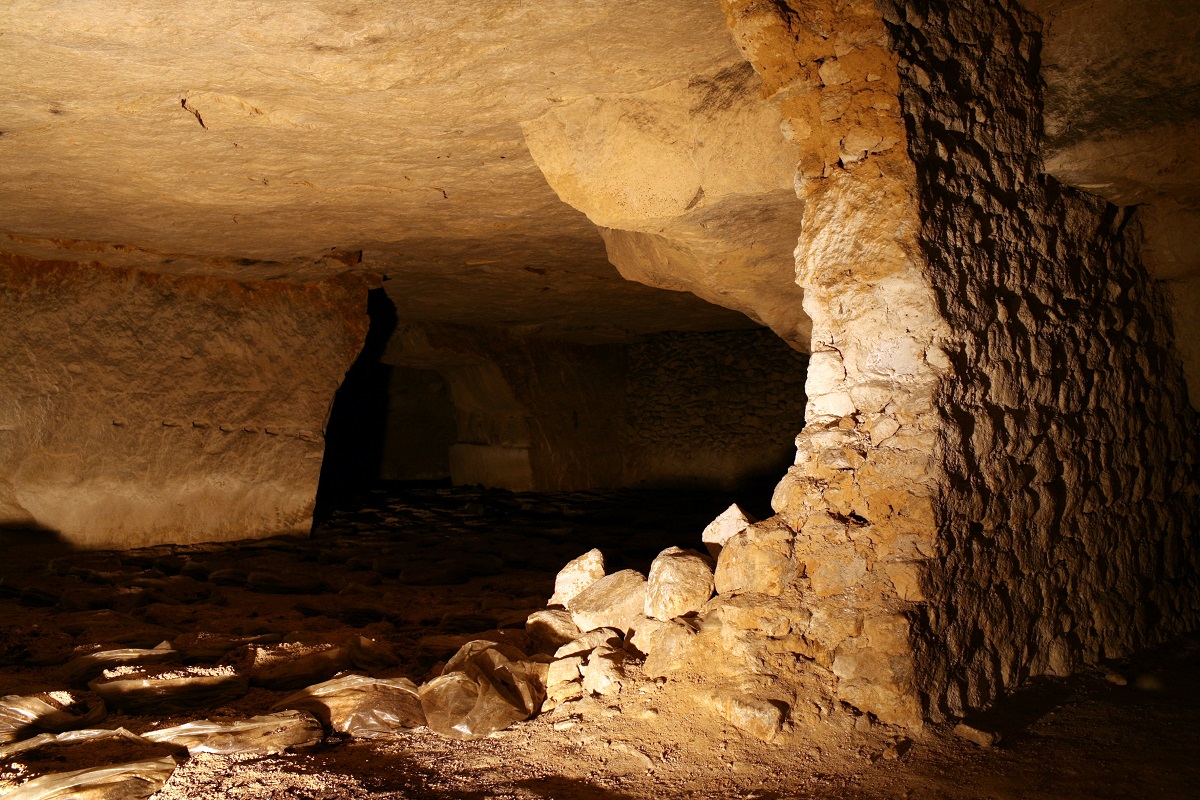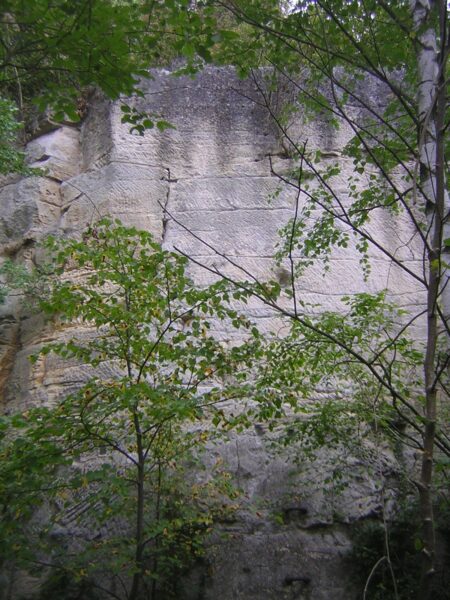Add to favorites
The Maison de la Pierre invites you to immerse yourself in the underground world of the Parrain quarry, following a trail with light and sound effects. After a descent of more than 20 metres into the depth of the earth to listen to the silence, you can, if you wish, complete your visit by enjoying the experience of handling the material in sculpture workshops.
A 50-million-year journey
Between 41 and 49 million years ago, a shallow sea covered the whole region, which then had a tropical climate! Over time, under the pressure of the forming mountain ranges, the sea receded and marine deposits gradually transformed into rock, as evidenced in the numerous small fossils that brighten the stone.
With successive climate changes, various layers of sediment were overlaid on each other. This created stones with a variety of different qualities: very fine or very calcareous, very compact or softer. The level of hardness therefore varies depending on the strata. The last deposit in a very calm sea produced an overlying rock that is very hard. This meant that, in the early days, the quarrymen had to extract stone from underground.
High-quality production
Operational since the Gallo-Roman times, the Saint-Maximin quarries supplied stones that were used in the construction of many Parisian monuments, from the Thermes de Cluny to the Opéra de Paris.
But it was notably in the late 17th century that the stone of Saint Maximin was in demand, when Louis XIV launched numerous projects and requisitioned all Saint-Maximin’s quarries. The Louvre, the Palace of Versailles, the Hôtel des Invalides, the Place de la Concorde were all built during this time. Later, the huge projects initiated by Haussmann also used it in large quantities, for example for the construction of the Paris Opera.
Until the 20th century, stone was manually extracted using to the technique known as ‘piliers tournés’, where the quarrymen dug the rock by following natural cracks and left pillars in place to retain the upper masses. The stones were then transported via inland waterways connecting the Oise to the Seine.
A welcoming place
The extraction of stone from the Carrière Parrain continued until 1925. The underground quarry was then adapted to house a mushroom farm until 1993: the cool temperature (12°C all year round) and humidity level (80%) was ideal for their cultivation.
The quarry also served as a shelter for local people during the 1944 bombardments, which destroyed 95 per cent of the village of Saint Maximin.
The Maison de la Pierre of South Oise is promoting the site by presenting its history through the various extraction techniques used in the quarries, the fossils and the different methods of mushroom cultivation.
The exhibition room of the Front de Taille owes its name to the exterior stone cladding, which recalls the face of the open-cast quarries. It is used for hosting cultural events, exhibitions, conferences and concerts.
Tourisme et Handicap and Qualité tourisme certified.
Practical information
22 rue Jean Jaurès
60740 Saint-Maximin
Tel: +33 (0)3 44 61 18 54
Site internet
To complete your visit:
Click on this link to download the hiking app for geolocalisation.
Add to favorites






